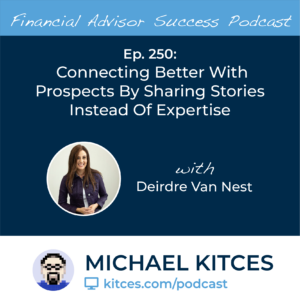In the delivery of “the financial plan,” advisors have traditionally presented the thick, leather-bound, firm logo-embossed, three-inch binder to clients. On top of being a tool to present “the plan” to clients, this also was an outward demonstration of the sheer depth of analysis the advisor completed to compile this plan; a physical manifestation of the advisor’s “value”. Yet while that depth of meticulously compiled information can be helpful, it also comes with drawbacks. As, in practice, the especially thorough financial plan can be overwhelming to clients, if they open it at all. And at the end of the day, in-depth financial planning analyses can also quickly become out-of-date. To address this challenge, several years ago financial advisor and client communication guru Carl Richards made the alternative case – in his book The One-Page Financial Plan – that all of a client’s “need to know” information ought to be distilled into just a single page instead. In other words, the advisor would simply deliver a One-Page Financial Plan.
It’s worth noting that a One-Page Financial Plan (OPFP) doesn’t mean that the three-inch binder’s worth of information doesn’t exist; the OPFP is an alternative for a deliverable, not an alternative to the work itself. It’s about making a distinction between what advisors could share with a client, versus what a client needs (and really wants?) to know. Which means the creation of an OPFP is all about focusing that limited space to hone in on what each client truly needs to see and wants to talk about.
Beyond the sheer time savings of not producing such a lengthy physical financial plan deliverable, one of the major advantages of the OPFP is its ability to be a “living plan”. Because the traditional financial plan is often so long and time-consuming to produce, most firms only update it once every several years. By contrast, the OPFP can easily be updated on an ongoing basis every year, or even at every check-in meeting with the client throughout the year – which makes it easier for an advisor to pivot in unforeseen circumstances and disruptions (such as, for example, a pandemic!). Rather than reacting to a few years’ worth of changes, advisors can proactively adjust and update the plan as life happens.
Because the OPFP is a living document, a first draft can be constructed as soon as an advisor begins meeting with a new client, simply using standard Document and Spreadsheet tools (e.g., Word and Excel in Microsoft, or Docs and Sheets in Google). As while the Plan will shift a lot over the first few weeks, it nonetheless provides a framework that advisors and clients can work through together to reach mutual clarity. And once an OPFP has been refined and has buy-in from both an advisor and client, it can even become the centerpiece of meetings, because both parties agree that the OPFP has the most important information in order to make informed decisions.
Simmering down a financial plan to one page may be a hard adjustment at first, but it is certainly worth pursuing as a time- and information-efficient option to show clients what they need to know. Many advisors also refine their OPFP strategies over time, opting for more graphics (built from templates to ensure they’re easy to update), or building in automations to make the Plan even easier to compile and comprehend. But ultimately, the OPFP is useful as a tool to drill down to a client’s two biggest questions: “Am I doing OK?” and “What should I do next?” Providing a one-stop-shop to answer these two questions nudges clients (and advisors!) to stay focused on the right things—and work together to keep heading in the right direction!

 Welcome back to the 250th episode of the Financial Advisor Success Podcast!
Welcome back to the 250th episode of the Financial Advisor Success Podcast! Welcome back to the 249th episode of the Financial Advisor Success Podcast!
Welcome back to the 249th episode of the Financial Advisor Success Podcast!
